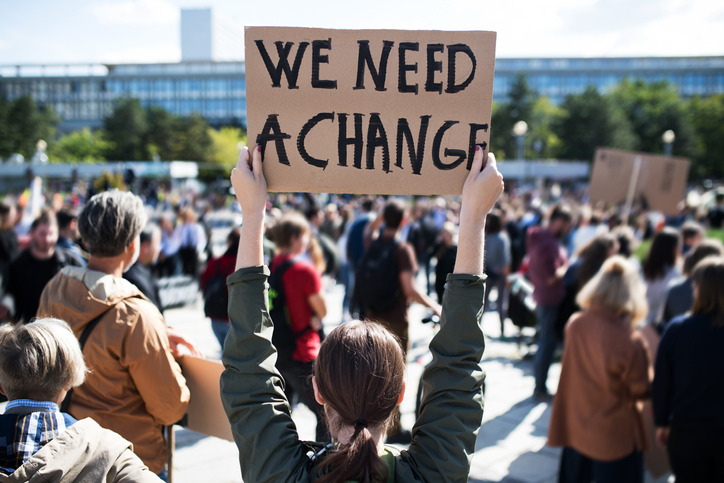And so, naturally, newspaper coverage tends to focus on headline-grabbing stories – Insulate Rebellion’s latest superglue stunt, Greta Thunberg’s football chant or the hypocrisy of private jet-hopping premiers. But the untold story is not the stunts during the 14-day fandango, but how we take the serious work that went on behind the scenes and turn those proposals and hopes into a reality. When the event closes is where the hard yards begin.
There was definitive movement at COP26, with leaders signing pledges to move to low-carbon transportation, the phasing out (or down) of coal energy production and commitments to divert funding away from fossil fuel-dependent industries and into alternative energies. But, as the old adage goes, we mustn’t mistake movement for progress. It is now up to us to turn the intention into action.
To make real progress on sustainability, we have to link sustainability closely to our core business objectives. Alongside revenue growth and profit, sustainability needs to become a key factor in what sets the value of a business. We are seeing a growth in ESG (Environmental, Social, Corporate Governance) reporting but there is still a lack of standardisation and it needs to move out of the corporate social responsibility ghetto and into the mainstream.
Because, quite simply, embedding sustainability makes good business sense. Once organisations can identify and clearly articulate how meeting sustainability goals makes them a more successful company, the bottom line gets involved. From better quality staff hires and higher retention rates, to reduced wastage and higher customer consideration, sustainability has made the leap from business cost to investment in its future.
Digital is a powerful tool to drive sustainability into the heart of business.
On the consumer-facing front, there is a growing wealth of evidence that consumers want to make sustainable decisions and that they will, given half a chance and even at a price premium. However, like many of us in the business world, how to make those choices is still incredibly difficult. Consumers are crying out for us to make sustainability simple and those companies that are forging ahead are already seeing the benefit.
But the untold story is not the stunts during the 14-day fandango, but how we take the serious work that went on behind the scenes and turn those proposals and hopes into a reality. When the event closes is where the hard yards begin.
Farfetch, a high-end fashion company, is well-known for its sustainability efforts. It collates ranges based on their sustainability credentials in its ‘Conscious Edit’. Plum in the middle of a pandemic, when we’re all supposed to be resorting to cheap leisurewear, Farfetch posted Q2 2021 profits of more than $70 million, up 44%, year-on-year. It should be noted that, while to describe it as a fashion retailer would be correct, Farfetch describes itself as a technology company. That is how vital digital and its associated technologies are to the company’s ability to grow and adapt.
Digital is also driving new customer behaviours. Following a successful pilot in the Carrefour supermarkets in France, Loop, Terracycle’s reusable packaging initiative, recently signed up Tesco, ASDA and other retailers to take part in its scheme. Powered by digital, consumers scan QR codes to pay a deposit for their bespoke packs which can be returned either via delivery drivers or in-store, in exchange for fresh product. This is a prime example of the ‘inconvenience’ naysayers would have said would torpedo sustainable initiatives, but that through the power of digital has been a roaring success.
Internally, too, we need to be considering the power of digital to reframe our businesses. We need to explore the potential of artificial intelligence (AI) to refine our supply chains – more important than ever in today’s climate – delivering efficiency as well as sustainability by cutting wasteful packaging, unnecessary transit and even reducing returns. The latter is responsible for a huge amount of both carbon footprint and profit erosion in retail. To be able to ‘right size, every time’ from fashion to washing machines, and ‘deliver on time, every time’ for perishable goods with in-transit, real-time monitoring via internet of things (IoT) sensors has the potential to dramatically cut carbon – and cost.
As we look forward, digital can be a powerful tool to help both business and consumers make the right choices towards a more sustainable future. As businesses, when we’re designing digital products, we need to update our thinking to focus not only on users’ surface needs such as simplicity and convenience, but also those underlying needs around wanting to make sustainable choices.
This is not one and done. Sustainability is a moving feast and we will never have done enough. We have to continually review what’s working and what new opportunities exist to do better. The investment and innovation in sustainable solutions right now is unprecedented and we’re all learning as we go. The right choices today may not be the right ones tomorrow. Understand where you want to get to, but don’t be afraid to change your approach on how you get there.











